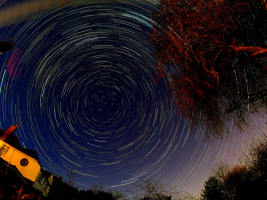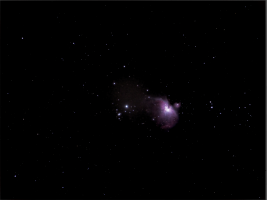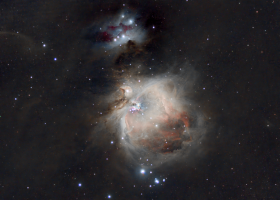
About
This all started back in January 2020 when I discovered the "LiveComp" mode on my Olympus mirrorless camera, thus permitting me the chance to do a star trail image, seen here...

Star trails over Derby
Despite having done physics at A level (admittedly many many years ago) I was mildly taken aback at the movement of the stars so made the fatal mistake of investigating further on how to prevent a star trail, and to keep the objects in the image stationary. Hence I found out about the equatorial mount. I got my first one in about April 2020 (while the entire world was grinding to a halt) and pretty much everything else, in my astrophotography terms anyway, is history. My first image from an equatorial mount looks primitive now, but I cannot lie about the fact I was literally speechless that I'd imaged a bona fide NEBULA. So here it is...

First attempt at M42
Squint and you might just work it out. This is unspectacular, but it was mine and I'd done it. Fast forward over three years, and counting, and in fact my equipment isn't streets better than back then, but I have definitely come a long way in knowing what I am looking for, and maximising the (often free, but not always) incredible hardware and software available to people like me, the mere amateur.
I've come a long way, I'm pretty sure of that. I'm still learning, and I still love that rush of excitement when I can see the image appearing in real time on the screen. Full of anticipation of what the finished image might look like. This is the most recent M42 I've managed. A tricky target even for the semi-experienced astrophotographer, but hopefully obviously streets ahead of what I managed three short years ago...

M42 - The Orion Nebula
©2023 dobberastro - all images are my own, captured from my Bortle 6 backyard in the UK. Please don't steal them. Ask nicely and I will probably let you use them.




